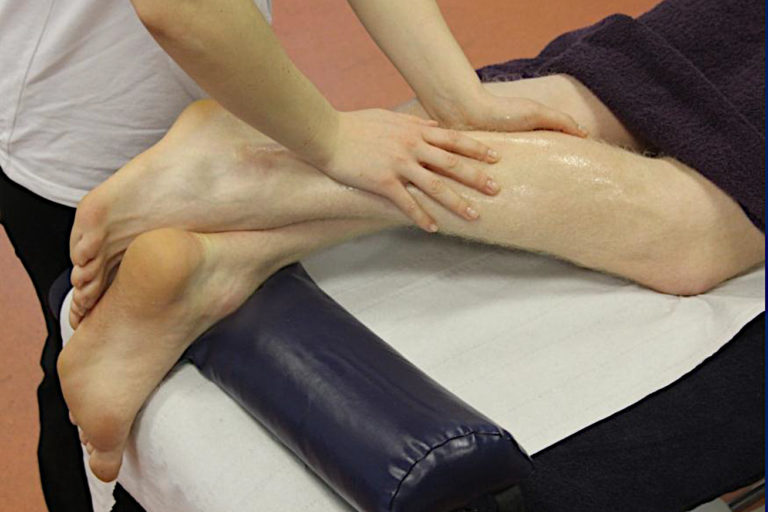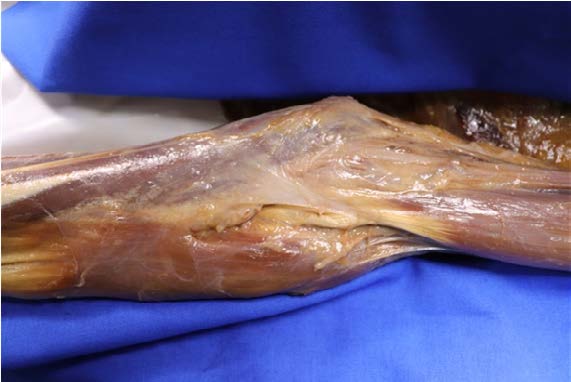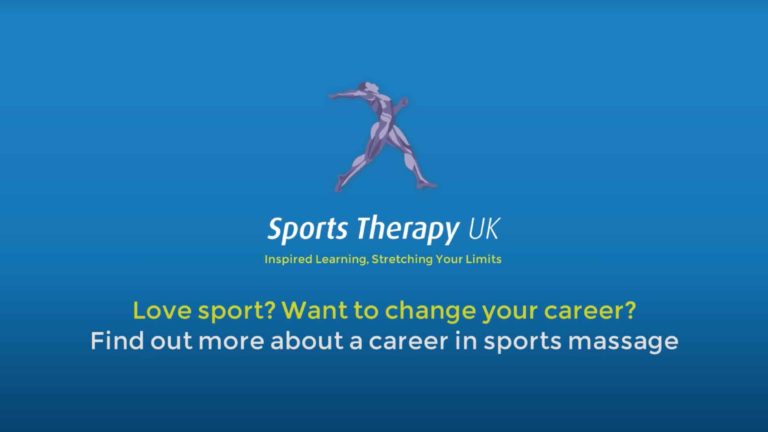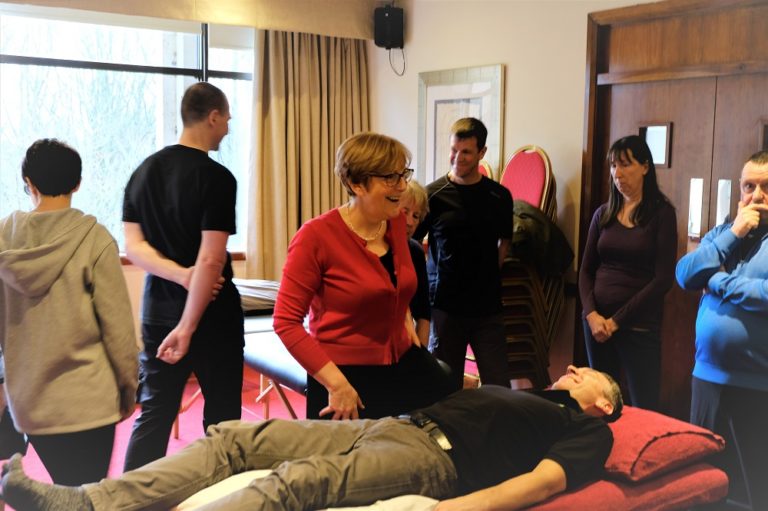This is the third blog in my Body Mechanic Series. In the first two we discussed correct couch height and looked at the basic working posture. In this one I’d like to concentrate on the importance of your alignment whilst working with clients.
I would consider the two biggest challenges we face as massage therapists are maintaining movement from the core and our spinal alignment. Unless we are prepared to be fully mindful each session, we are likely to start moving from our shoulders.
Gravity will pull our shoulders forward and our heads and necks will follow – this puts added strain onto the lumbar vertebrae and the spinal extensors. This is why I can’t stress enough the importance of good alignment every session.
One of the most common mistakes massage therapists make is that their heads are about 3 to 5 inches forward from ideal spinal alignment – which is where the ear sits directly over the shoulder. This happens because, especially when we are starting out, we don’t trust our fingers and hands to tell us what is happening in the tissue beneath them. We have this urge to look at what we are doing, to try to see with our eyes rather than our hands, which in turn drops our shoulders and pulls us forward towards what we are working on.
The truth is that massage doesn’t actually require much help from our eyes. Our hands are the vehicles that can transmit all the necessary information to us. By changing the focus to your hands you increase the sensitivity of the touch receptors in your fingers which will in turn give you more accurate information about the tissue and help you maintain the correct alignment.
The other important thing to think about regarding optimal body alignment is the placement of your feet on the ground. This will influence the direction of your massage stroke, while at the same time providing a stable base. Foot placement has a big effect on both body mechanics and body alignment. There are two common alignments that you can use during a massage therapy session:
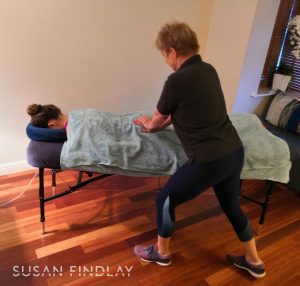
Asymmetrical Alignment
Working asymmetrically creates a balance between your upper and lower body, and from side to side. In this position it is much more efficient to use techniques that require you to push away from yourself i.e. long strokes, effleurage. Try to keep your eyes looking forward rather than down. This will help you maintain an upright posture. Over time you will get a good sense of where your hands are and what structures you’re feeling, eventually you will no longer need to look. When choosing a different body part to work on, maintain the asymmetrical alignment, keep your hips square onto what you’re doing, and your shoulders relaxed.
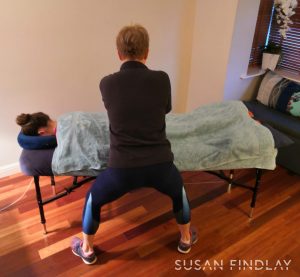
Symmetrical Alignment
A symmetrical stance is when both feet are placed out to either side while the hips are facing forward. The feet should be a bit farther than hip-width apart with knees slightly bent. This position is more useful when you are using gathering techniques such as petrissage. To generate movement from your legs try to rock from side to side or to push up from bent legs. To help support your torso engage your abdominal muscles as you gather and lift the tissue towards you. For an added variation, allow your hip and torso to slightly push your arms forward and pull them back, in other words while one side of your body is pushing one arm the other side of the body is pulling the other arm back.
The most important thing to take away from this article is that the perfect alignment won’t come naturally. It is normal for us to want to look at what we are working on and therefore become misaligned as our shoulders drop and our heads move forward. Now that you know this is what your body is going to want to do, it’s up to you to maintain awareness and be prepared to constantly adjust yourself. By keeping your head posture in the front of your mind during ever session and constantly paying to your spinal alignment, you stand yourself in much better stead to have a long, healthy and successful career.
Top Tip how to check if you have got it right, does it feel easy, is your upper body relaxed, is most of the movement coming from your legs allowing the arms to follow?
Not joined up yet?
There’s plenty of reasons to join the LCSP Register
Insurance Partners
Our dedicated team can tailor individual policies to suit your specific needs
Workshops
Keep your skills up to date with CPD Workshops and courses
Business Support
Advice tailored to working in the private sector
Find a Therapist
Our directory of therapists searchable by the general public
Welfare Officer
Supporting members who may have situations of difficulty where they need assistance, guidance or reassurance.


